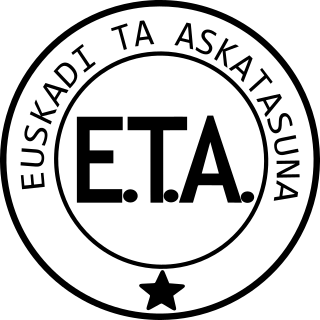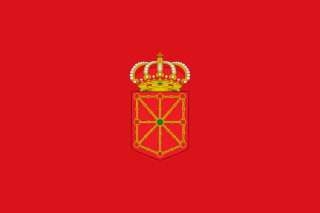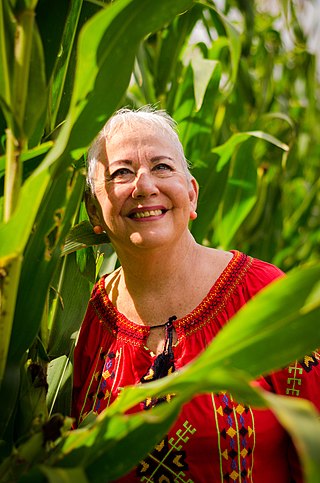
Basque is the only surviving Paleo-European language spoken in Europe, predating the arrival of speakers of the Indo-European languages that dominate the continent today. Basque is spoken by the Basques and other residents of the Basque Country, a region that straddles the westernmost Pyrenees in adjacent parts of northern Spain and southwestern France. Basque is classified as a language isolate. The Basques are indigenous to and primarily inhabit the Basque Country. The Basque language is spoken by 806,000 Basques in all territories. Of these, 93.7% (756,000) are in the Spanish area of the Basque Country and the remaining 6.3% (50,000) are in the French portion. Basque is considered the most spoken language isolate in the world.
The Basques are a Southwestern European ethnic group, characterised by the Basque language, a common culture and shared genetic ancestry to the ancient Vascones and Aquitanians. Basques are indigenous to, and primarily inhabit, an area traditionally known as the Basque Country —a region that is located around the western end of the Pyrenees on the coast of the Bay of Biscay and straddles parts of north-central Spain and south-western France.

ETA, an acronym for Euskadi Ta Askatasuna, was an armed Basque nationalist and far-left separatist organization in the Basque Country between 1959 and 2018, with its goal being independence for the region. The group was founded in 1959 during the era of Francoist Spain, and later evolved from a pacifist group promoting traditional Basque culture to a violent paramilitary group. It engaged in a campaign of bombings, assassinations, and kidnappings throughout Spain and especially the Southern Basque Country against the regime, which was highly centralised and hostile to the expression of non-Castilian minority identities. ETA was the main group within the Basque National Liberation Movement and was the most important Basque participant in the Basque conflict.

Navarre, officially the Chartered Community of Navarre, is a landlocked foral autonomous community and province in northern Spain, bordering the Basque Autonomous Community, La Rioja, and Aragon in Spain and Nouvelle-Aquitaine in France. The capital city is Pamplona. The present-day province makes up the majority of the territory of the medieval Kingdom of Navarre, a long-standing Pyrenean kingdom that occupied lands on both sides of the western Pyrenees, with its northernmost part, Lower Navarre, located in the southwest corner of France.

Basque nationalism is a form of nationalism that asserts that Basques, an ethnic group indigenous to the western Pyrenees, are a nation and promotes the political unity of the Basques, today scattered between Spain and France. Since its inception in the late 19th century, Basque nationalism has included Basque independence movements.

The Basque Nationalist Party, officially Basque National Party in English, is a Basque nationalist and regionalist political party. The party is located in the centre of the political spectrum.
The year 1999 in architecture involved some significant architectural events and new buildings.

The Basque Country is the name given to the home of the Basque people. The Basque Country is located in the western Pyrenees, straddling the border between France and Spain on the coast of the Bay of Biscay.
Ricardo Legorreta Vilchis was a Mexican architect. He was a prolific designer of private houses, public buildings and master plans in Mexico, the United States and some other countries.
Mikel Lasa Goikoetxea is a Spanish former footballer who played as a left-back, currently a manager.

A sagardotegi is a type of cider house found in the Basque Country where Basque cider and traditional foods such as cod omelettes are served. Modern sagardotegis can broadly be described as a cross between a steakhouse and a cider house.

The Basque Country, also called the Basque Autonomous Community, is an autonomous community in northern Spain. It includes the Basque provinces of Álava, Biscay, and Gipuzkoa. It also surrounds an enclave called Treviño, which belongs to the neighboring autonomous community of Castile and León.

Joxe Miguel Iztueta Cortajarena, better known as Lazkao Txiki was a Basque bertsolari poet and musician.
Basque Mexicans are Mexicans of full, partial, or predominantly Basque ancestry, or Basque-born persons living in Mexico.

The Torre BBVA México is a skyscraper on Paseo de la Reforma in Colonia Juárez, Mexico City. It is the headquarters of BBVA México, Mexico's largest bank. Upon its completion in 2015 it became the second tallest building in Mexico City at 235 metres (771 ft) and 50 stories high. However by 2018 it is expected to be the fourth tallest in Mexico, after Torre KOI, Torre Reforma and Punto Chapultepec.
The 1983 Tour of the Basque Country was the 23rd edition of the Tour of the Basque Country cycle race and was held from 4 April to 8 April 1983. The race started in Legorreta and finished at Errezil. The race was won by Julián Gorospe of the Reynolds team.

Abandoibarra is an area of the city of Bilbao, Spain, located next to the estuary in the neighborhood of Abando. After the process of deindustrialization experienced by the town since the mid-1990s, Abandoibarra became the central axis of urban regeneration in the city, continuing today in Zorrotzaurre.

Enriqueta Medellín was a Mexican surgeon and environmentalist. Raised in Mexico City, from a young age she participated in projects to clean up the city and became interested in the links between disease and the environment. She earned a degree as a medical surgeon from the National Autonomous University of Mexico and specialized in human genetics. She also studied environmental education and management.

Enriqueta Legorreta was a Mexican soprano and activist. She grew up in Mexico City and studied opera at the Conservatorio Nacional de Música. Debuting in 1941, she earned praise for her portrayal of Sieglinde in Wagner's Die Walküre and was noted as the first Mexican woman to sing a Wagnerian opera. She was one of the pioneering singers who joined and performed in the inaugural season of the Ópera Nacional, performing Leonora in Beethoven's Fidelio in 1943. During her career, which lasted into the mid-1970s, she sang with many well-known conductors and musicians, including Claudio Arrau, Leonard Bernstein, Pablo Casals, Igor Stravinsky, and Isaac Stern. She was also involved in protests against the opera association to ensure that singers were paid for their professional work, rather than their affiliations with officials.
Legorreta could refer to:













